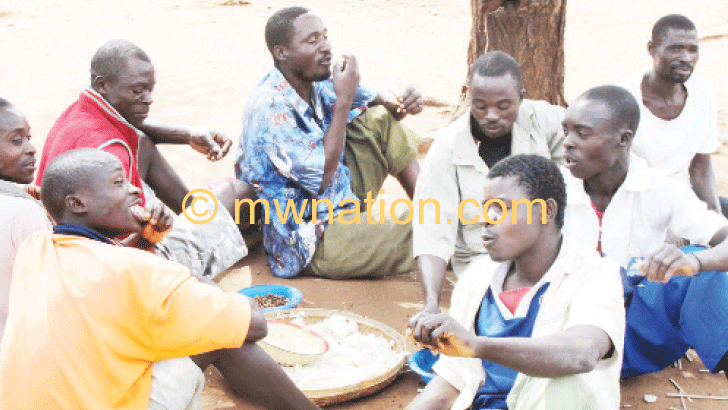How to survive in the year of hunger
That Malawi is facing food shortage is no longer news. Government and other stakeholders have come out in the open to declare that most parts of the country will this year (2016) experience food deficits.
The situation has been aggravated by the El Nino weather phenomenon, which Malawi and other countries in the southern and eastern Africa region are experiencing, that has affected rainfall patterns all across the region.
The status quo puts to question how Malawians can survive what promises to be one of the worst lean years since the 2000/2001 harvest season.

To Malawians such as Innocent Mbewe of Chirimba Township in Blantyre, it is time people in the country started rethinking their eating habits in light of constraints in availability of food, especially the staple food, maize.
“The current food situation will only get worse as months go by since the remaining food stocks in many households will be finished. In the villages, the shortage of food is felt with more intensity than in urban areas. People in towns and cities have more alternatives than in the rural areas. That is the more reason we need to seriously think of changing our attitudes towards diet,” said Mbewe.
The food security forecast for the 2015/2016 season conducted by the Malawi Vulnerability Assessment Committee (Mvac) shows that up to 2 833 212 (17 percent of the population) will not meet their annual food requirements during the 2015/2016 consumption period.
The report adds that the total humanitarian staple food needs to support the affected population is estimated at 124 183 metric tonnes of maize equivalent, which in monetary terms translates to K18.6 billion if the maize is sourced locally.
The current food crisis has forced government and its partners to move in to assist the most vulnerable citizens.
Yet to others, maize is a traditional crop that leaves not many alternatives.
“Traditionally, Malawians are used to eating nsima, whether in urban or rural areas and there is no question about it. Of course, since many rural dwellers depend on farming, they have some additional kinds of food. But it is nsima that satisfies even in the presence of potatoes, pumpkins, cassava and others,” said Mbewe.
While the National Food Reserve Agency (NFRA) is still buying 50 000 metric tonnes of locally produced maize, the total planned Strategic Grain Reserve (SGR) stocks is said only to be just enough to cover humanitarian assistance needs for the current consumption year, with no reserves for the next consumption year.
Under depressing circumstances, Alexander Kalimbira, a nutritionist based at the Lilongwe University of Agriculture and Natural Resources (Luanar) tipped Malawians on how they can beat the hunger year.
“It is a fact that as Malawians we are known for wastefulness, especially when it comes to food. But under the present circumstances, we need to be a lot more careful. First of all, we have to accept that food is no longer plenty, therefore, we should not be choosy when it comes to food. Not only nsima should be relied upon. We must diversify our food base by incorporating other types of foods in the potato family, cassava and others,” he said.
Kalimbira said, the current food situation should raise awareness among Malawians that they can also use other types of food depending on the area that they are.
He strongly advised people in the country to make good use of the food that is available.
“People must always prepare the food that they can consume. In social gatherings such as weddings, funerals and others it is common practice to prepare food without regard to the number of people that are to eat it. As to what type of food, locally-based combinations should be handy,” he said.
There have already been stories going around as reported in the local media-of cases of massive starvation in some communities.
This comes at a time the country is receiving erratic rains all and around, a pattern that has already caused extensive damage by harsh weather and attacks by army worms in several districts, including Mangochi, Zomba and Balaka, that are under the Machinga Agricultural Development Division (Madd).
In a bid to stay healthy under a period of food shortages, nutritionist Kalimbira advised that Malawians must strive to balance their diet according to the country’s approved six food groups.
“Foods that must be taken should at least consist four combinations of the six at a given time. First group consists of staples such as maize, cassava, and rice while the second group has animal foods such as meat, birds, fish and grasshoppers. In the third group you find fruits of all kinds and in the fourth group you have legumes such as beans, soya and others. The final two groups have vegetables of different kinds and fats and oils that include groundnuts and avocado pears respectively,” he said. n





